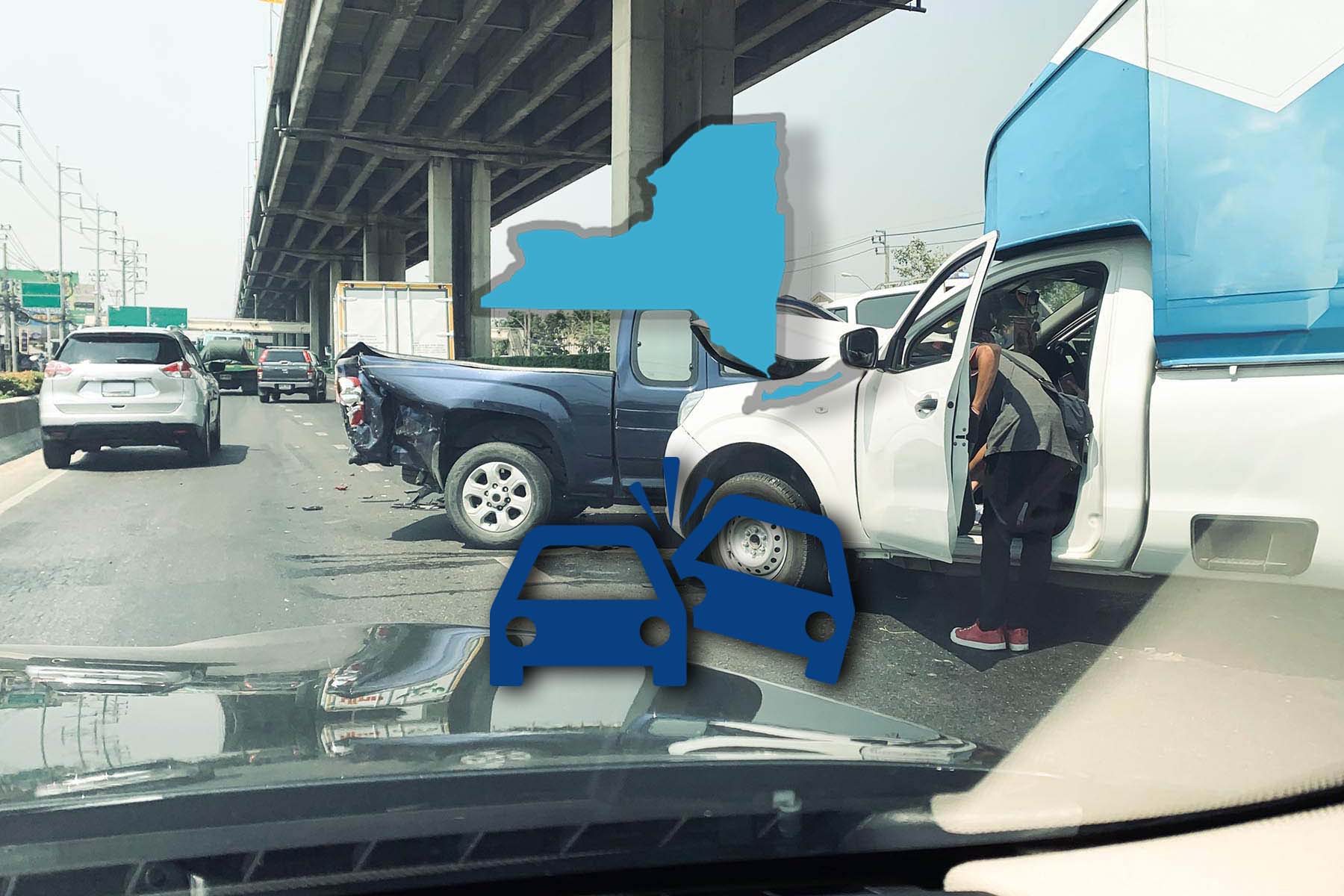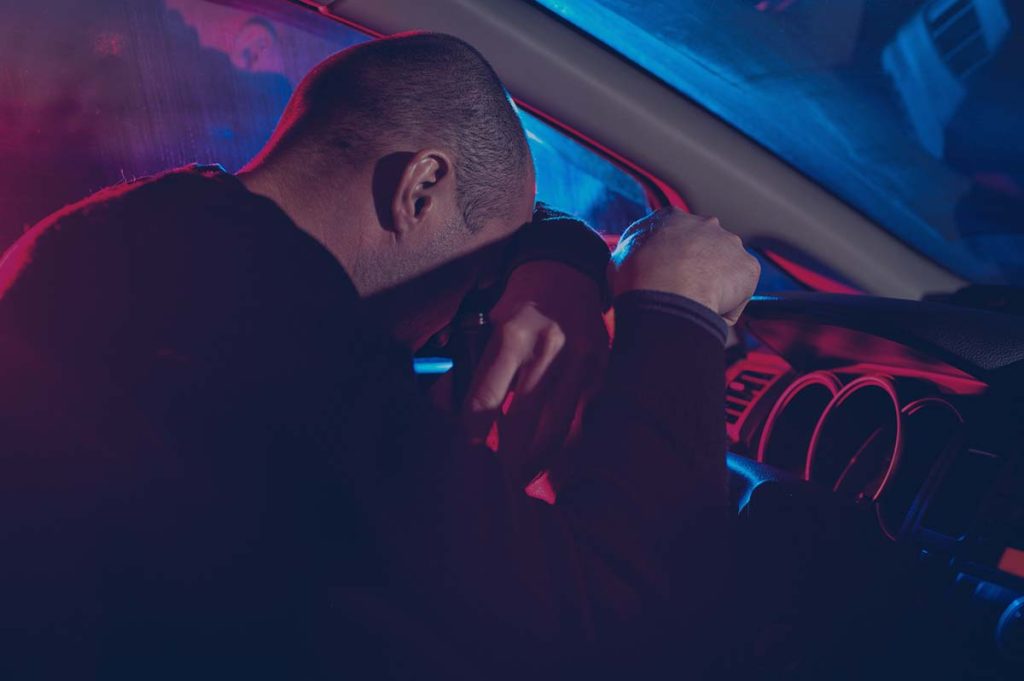
New York Hit and Run Laws: What happens if someone leaves the scene of an accident?
- New York Hit and Run Laws: What happens if someone leaves the scene of an accident?
- New York Hit and Run Laws Explained: What Happens if you Leave the Scene of an Accident?
- Is Leaving the Scene of an Accident a Misdemeanor in New York?
- Is Leaving the Scene of an Accident a Felony in New York?
- What is the Penalty for Leaving the Scene of an Accident in New York?
- How is Fault Determined in New York? And How Victims Collect Compensation
- What is the Statute of Limitations on car Accidents in New York?
- Leaving the Scene of an Accident in New York: Defenses
Under title 6 section 600, New York Hit and Run laws, leaving the scene of an accident without reporting, or exchanging information with the struck person is a felony or misdemeanor. The amount of damage done determines the charges.
Quick take: leaving the scene of an accident in New York
- You must call the police if the accident involves damage surpassing $1000, or in any one suffers death or injury.
- New York is a no-fault state, meaning your insurer pays you.
- Victims may file a civil lawsuit.
- Failure to report an accident in New York within ten days is a misdemeanor.
- Leaving the scene of an accident involving death is a felony.
- You have three years to take civil action.
- Never admit fault at the scene of an accident.
- Your insurer may deny you compensation if you do not report the accident.
References
New York Hit and Run Laws Explained: What Happens if you Leave the Scene of an Accident?

Under state law, if you know that or have reason to know that you have caused damage to property or person, you must immediately stop your vehicle and fulfill the statutory obligations below.
- Exhibit your driver’s license and insurance identification card to the struck property owner or victim.
- Give your name, license number, residence including street name and number, insurance information, and insurance identification to the other party.
- Provide proof of insurance.
Starting March 2022, if you hit an unattended vehicle, you must, quote “incase the person sustaining the damage is not present at the place where the damage occurred then he or she shall report the same as soon as physically able to the nearest police station, or judicial officer.”
Also, if the victim is incapable of receiving your information, you must give the information to a peace officer present at the scene.
Does Fault Matter in a Hit and Run?
In New York, fault does not matter, meaning you commit a hit and run the moment you leave the scene of an accident without fulfilling the requirements above. However, the court may view you leaving the scene as a sign of guilt.
So, in short, whenever you are involved in an accident in New York, you must:
- Immediately stop your vehicle and find out if anyone needs help.
- Contact law enforcement if the damage done surpasses $1000 and emergency workers if needed.
- Remain at the scene until you exchange information with the other party or until law enforcement tells you to leave.
- If the accident results in property damage alone, section 600-1a says that you must exhibit your license and insurance information to the other party.
- Section 6002A says that you must call the police, share insurance information, and file a report if anyone suffers death or injury.
Is Leaving the Scene of an Accident a Misdemeanor in New York?

Yes. If you fail to share information or leave the scene of an accident involving injury without fulfilling the statutory obligations above, you are guilty of a misdemeanor.
If the accident involves property damage alone, failure to share your information and leaving the scene is a traffic infraction. The penalty for a traffic infraction in New York under section 600a is a maximum o 15 days in jail and a $250 fine.
Prosecutors must prove in both felony and misdemeanor hit and runs:
- There was physical contact with the car.
- You knew or should have known of your involvement in a traffic collision.
- You left the scene without fulfilling your statutory obligations
What is a Reportable Accident in New York?
Under New York hit and run laws, you must report the accident if property damage surpasses $1000 or if anyone suffers death or injury. You do not have to call the police if the damage is below $1000.
Note that you have ten days to file a report to the New York Department of Motor Vehicles.
What Happens if you do not Share Insurance Information after an Accident?
In New York, failure to provide insurance information after an accident is a class A misdemeanor if the victim suffers injury and a class B misdemeanor if the accident involves property damage. The penalty for a class A misdemeanor in the state is a maximum fine of $1000 and up to one year in jail or three years’ probation.
What Happens if you do not Report an Accident in New York?
A reportable accident in New York involves property damage surpassing $1000, death, or injury. Failure to report is a misdemeanor.
What to remember:
- If you cannot locate the owner of a struck vehicle, animal, or property, you must notify law enforcement
- Both drivers must file a report if the accident involves injury or property damage above $1000.
- If anyone dies or suffers a serious injury, you must notify the police immediately.
- Leaving the scene of an accident in New York will add 3 demerit points to your driver’s license.
In short, If the accident results in property damage alone and you leave the scene, you are guilty of a traffic infraction or class A or class B misdemeanor. Furthermore, leaving the scene of an accident may result in multiple charges. So, make sure that you remain at the scene until you exchange information, contact law enforcement, and offer reasonable assistance to anyone that needs it.
Is Leaving the Scene of an Accident a Felony in New York?

Yes. Under state law, if you leave the scene of an accident involving serious injury, you are guilty of a Class E felony. A “serious injury” is any injury that puts the victim at risk of death or permanent disfigurement. For example, it could be limb loss, organ damage, facial disfigurement, paralysis, etc.
DUI Hit and Run-in New York is a Felony
If the driver was under the influence of drugs or alcohol at the time of the accident and the victim suffers serious injury or death, The driver is guilty of a felony. On the other hand, if the accident results in property damage alone, the driver will likely face multiple misdemeanor charges.
Vehicular Manslaughter in the Second Degree
New York penal code section 125.12 “Vehicular manslaughter in the second degree,” reads, quote:
“If it is established that the person operating such motor vehicle, vessel, public vessel, snowmobile or all-terrain vehicle caused such death while unlawfully intoxicated or impaired by the use of alcohol or a drug, then there shall be a rebuttable presumption that, as a result of such intoxication or impairment by the use of alcohol or a drug, or by the combined influence of drugs or alcohol and any drug or drugs, such person operated the motor vehicle, vessel, public vessel, snowmobile or all-terrain vehicle in a manner that caused such death, as required by this section.”
Vehicular manslaughter is a class D felony in New York and is punishable by up to 7 years in prison.
What is the difference between murder and manslaughter?
If the victim dies or suffers a serious injury and the driver was under the influence of drugs at the time of the accident. That individual is guilty of a Class E felony. A class E felony in New York carries a maximum sentence of five years in prison and a fine.
What is the Penalty for Leaving the Scene of an Accident in New York?

- Leaving the scene of an accident involving minor property damage/failure to share information: traffic infraction, punishable by a maximum fine of $250 and up to fifteen days in jail.
- Failure to exhibit license or exchange insurance: class A misdemeanor if the victim suffers personal injury, punishable by up to one year in prison and a maximum fine of $1000.
- Hit and run involving personal injury/ failure to give insurance information: class B misdemeanor punishable by a maximum fine of $500 for a first violation. Any subsequent conviction constitutes a class A misdemeanor.
- Failure to report an accident in New York: class A misdemeanor, punishable by up to one year in jail and a maximum fine of $1000. If the victim suffers personal injury, failure to report is a class E felony, punishable by up to four years in prison and a maximum fine of $2500.
- Leaving the scene of an accident involving serious injury: class E felony.
- Hit and run involving death/vehicular manslaughter: class E or class D Felony. A class D felony in New York is punishable by up to 7 years in prison.
- Vehicular assault: class D felony
- Reckless driving/DUI hit and run class C felony, punishable by up to 15 years in prison and a maximum fine of $5000.
Remember, the facts presented may lead to multiple charges. So, we recommend contacting a defense attorney immediately.
How is Fault Determined in New York? And How Victims Collect Compensation
New York is a “no-fault” state, meaning your insurer pays you. However, victims of hit and runs have the option to sue. But there are conditions:
- There must be contact between your vehicle and the vehicle then left the scene.
- You must report the accident within 24 hours.
- To recover compensation for pain and suffering, you must show that your injuries meet the standards set by the state’s no-fault insurance laws.
You may sue the driver and or their insurer for medical expenses, pain and suffering, negligence, or a suitable claim. We recommend consulting with an attorney immediately before the statute of limitations expires.
What is the Statute of Limitations on car Accidents in New York?
Under state law, you have three years to file a lawsuit after an accident.
- New York’s statute of limitations for personal injuries is three years.
- For wrongful death, you have two years to file a wrongful death claim.
- The statute of limitations for negligence is three years.
Leaving the Scene of an Accident in New York: Defenses
Common defenses used in the state include:
- No one suffered injury, death, or property damage.
- The driver left the scene to avoid further harm or injury/you feared for your safety.
- Mistaken identity.
Other New York Laws